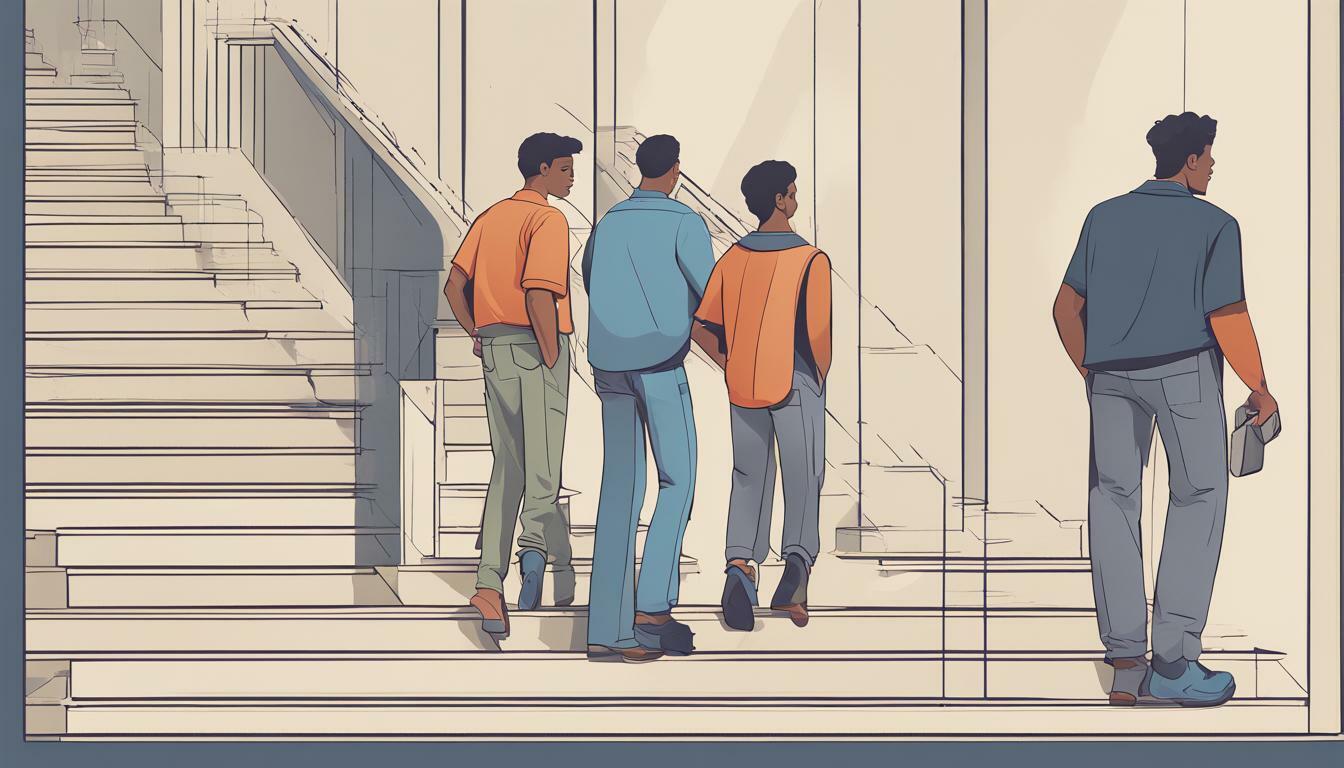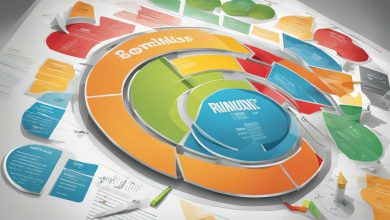
As a developer, understanding the role hierarchy within your team is crucial for your success and career growth. The development team comprises of junior, senior, and lead developers, each with their specific responsibilities and expertise.
Junior developers are at the entry-level of the development team and are responsible for learning the ropes and understanding the basics of the industry. Senior developers have more experience and specialize in specific technologies. Lead developers are the senior-most members of the team, responsible for decision-making, project management, and mentoring.
Key Takeaways
- Understanding the role hierarchy is crucial for success in a development career.
- The development team comprises of junior, senior, and lead developers, each with their specific responsibilities and expertise.
- Junior developers are entry-level members of the team, while senior and lead developers have more experience and expertise.
What is a Junior Developer?
Junior developers are the entry-level members of a development team. They play a crucial role in the development process, supporting the senior and lead developers in the creation of applications, software, and technology products. As the name suggests, junior developers are at the beginning of their coding career and typically have limited experience in the field.
Junior devs work under the supervision of senior and lead developers. They are responsible for implementing the code and assisting in the debugging process. With guidance and support, they learn to develop their skills and gain experience working on projects. Junior developers are also expected to stay up-to-date with technology trends and participate in ongoing training to improve their skills.
Junior developer responsibilities may include:
- Coding, testing, and debugging applications
- Assisting senior and lead developers in project planning and management
- Participating in code reviews and offering feedback
- Collaborating with cross-functional teams, including designers and product managers
- Staying up-to-date with emerging technologies and coding practices
While junior developers may have limited experience, they play a critical role in the development process. Their work supports the development of high-quality software products and provides them with the opportunity to develop their skills and advance to senior and lead development roles.
What is a Senior Developer?
Senior developers are highly experienced programmers who have taken on additional responsibilities within a development team. They are typically responsible for overseeing projects, providing technical guidance to junior and mid-level developers, and ensuring the development team meets project deadlines and goals.
Senior developers are often expected to possess excellent problem-solving skills, strong communication abilities, and extensive knowledge of coding languages, frameworks, and development tools. They are tasked with finding creative solutions to complex technical problems and optimizing code performance.
One of the most significant differences between senior and junior developers is the responsibility level. While junior developers may be assigned specific coding tasks, senior developers are responsible for the overall success of a project. They must be able to manage teams, organize workflows, and make strategic decisions to ensure project completion.
In addition to their technical expertise, senior developers must also possess leadership qualities. They are expected to mentor and coach junior developers to improve their skills and knowledge. They must also be able to effectively communicate with clients and stakeholders to ensure that project requirements are met.
Overall, senior developers play a vital role in the success of a development team. They bring a wealth of experience and knowledge to a project, and their guidance and leadership qualities are essential in ensuring the team meets project deadlines and goals.
What is a Lead Developer?
Lead developers are the highest level of developer within a development team. They are responsible for managing projects, making crucial decisions, and guiding junior and senior developers towards successful project completion.
Lead developers are technically proficient, and they are often the most experienced developer on the team. They also have excellent leadership and communication skills and can effectively manage and delegate tasks to junior and senior developers.
In addition to their technical skills, lead developers possess excellent project management skills. They are responsible for managing the project’s workflow, ensuring that deadlines are met, and mitigating any potential risks. They have a strong strategic focus and possess the ability to make critical decisions that will impact the project’s outcome.
Lead developers are also responsible for mentoring junior and senior developers. They provide guidance and support, helping team members build their skills and experience. This involves working closely with all members of the team to ensure that everyone is working towards a common goal.
The role of a lead developer is challenging, and it requires a high level of technical expertise and strong leadership skills. However, it is also a rewarding position that offers opportunities for growth and development. By mastering the skills necessary for this role, developers can advance their career and play an essential role in the success of their development team.
Key Differences Between Junior, Senior, and Lead Developers
The role hierarchy in development teams encompasses three primary levels – junior developers, senior developers, and lead developers. Each of these positions involves distinct responsibilities and skill sets that contribute to the successful delivery of software projects. Here’s a closer look at the key differences between these vital roles:
Junior Developers
Junior developers are typically new to software development and learning the basics of coding. They may have recently finished their formal education or are starting their first job in the tech industry. The primary responsibilities of junior developers include:
- Assisting senior team members with coding tasks
- Learning and implementing industry-standard programming languages, such as Java or Python
- Testing software functionality and identifying bugs
- Performing maintenance tasks on existing software systems
Junior developers work under the supervision of senior and lead developers, who provide guidance and mentorship as they develop their skills.
Senior Developers
Senior developers have several years of experience in the industry and possess in-depth technical knowledge and leadership skills. They take on more complex projects and tasks and have the following responsibilities:
- Designing and developing software architecture
- Reviewing and refining code written by junior developers
- Leading development teams and delegating tasks to junior team members
- Negotiating project requirements with stakeholders and clients
Senior developers are essential to the success of a project, bringing their expertise and experience to ensure that software is built to meet the needs of all stakeholders.
Lead Developers
Lead developers are responsible for overseeing all aspects of software development projects, from conception to final delivery. They possess exceptional technical skills and leadership qualities and assume the following responsibilities:
- Managing project timelines, budgets, and resources
- Collaborating with stakeholders and clients to define project requirements
- Developing and reviewing software architecture and code
- Mentoring and managing junior and senior team members
Lead developers act as the primary point of contact for all project-related matters, providing direction and ensuring that software projects are delivered on time, within budget, and to the highest quality standards.
The role hierarchy in development teams ensures that each team member is clear about their responsibilities and the expectations associated with their role. With a clear understanding of the differences between junior, senior, and lead developers, teams can work together more effectively to deliver high-quality software products.
Advancement Opportunities for Developers
For junior developers, the path to advancement typically involves gaining more experience and expanding their skill set. This may involve taking on more complex projects, seeking mentorship from senior developers, and participating in professional development opportunities such as workshops or training programs.
Senior developers, on the other hand, can advance to lead developer roles by demonstrating strong leadership skills, taking on more responsibility for project management and decision-making, and mentoring junior developers.
Lead developers are typically chosen from the pool of experienced senior developers and must demonstrate exceptional technical knowledge, project management skills, and leadership abilities. Advancement to this level can also involve pursuing additional education, such as a graduate degree in a relevant field.
It is important for developers at all levels to actively seek out opportunities for growth and advancement, as the technology industry is constantly evolving and new skills are always in demand.
Collaborative Dynamics Within a Development Team
The role hierarchy in development teams fosters collaboration and effective teamwork. Junior, senior, and lead developers work together to achieve project goals, and every level of expertise contributes to the success of a project. Effective communication and understanding of everyone’s contributions are essential for smooth collaboration.
Junior developers, for example, may have fresh perspectives and innovative solutions to problems, while senior developers may have a nuanced understanding of the project’s complexities. Meanwhile, lead developers have an overarching vision of the project and the necessary management skills to keep the team on track.
Team members must communicate clearly and respectfully, taking into account the different levels of expertise and responsibilities. Junior developers must feel empowered to ask questions and contribute to discussions, while senior developers must listen actively and provide mentorship when necessary. Lead developers must possess excellent communication skills to ensure everyone is on the same page and giving everyone the required guidance.
Overall, collaborative dynamics within a development team build a sense of community and strengthen the team’s ability to solve complex problems.
Benefits of the Role Hierarchy in Development
The hierarchical structure within a development team serves several important purposes. Here are some key benefits of the role hierarchy in development:
- Efficiency: A well-defined hierarchy ensures that developers are assigned tasks that match their skill levels and experience. This promotes efficiency and reduces the likelihood of errors or delays.
- Skill development: Junior developers can learn from senior developers and lead developers, acquiring new skills and knowledge. This helps them advance in their careers and take on more challenging roles.
- Knowledge sharing: Lead developers can facilitate knowledge sharing among team members by encouraging collaboration and communication. This can lead to better solutions and innovative ideas.
- Improved decision-making: A clear hierarchy allows for clearer decision-making processes. With each level of developer having defined roles and responsibilities, decisions can be made more efficiently and with greater confidence.
Overall, a well-defined hierarchy within a development team promotes a positive and collaborative environment that fosters growth and success. By understanding the different roles and responsibilities of junior, senior, and lead developers, organizations can build strong development teams that consistently achieve their goals.
Challenges and Potential Pitfalls
In any role hierarchy, there are potential challenges and pitfalls that may arise, and the development team is not exempt from this. Communication gaps may arise due to the different levels of experience and expertise among junior, senior, and lead developers. Senior or lead developers may assume that junior developers have a level of understanding of certain concepts or processes, while junior developers may hesitate to ask questions or clarify their doubts.
Power struggles may also arise, particularly between senior and lead developers, as they may have different visions or ideas on how a project should be managed or executed. Such disagreements can affect team morale and the overall success of the project.
Expectations management can also be a challenge, as junior developers may have unrealistic expectations about their career progression or the tasks they will be assigned. At the same time, senior and lead developers may struggle with balancing their own duties with the responsibility of mentoring and guiding junior developers.
To navigate these potential pitfalls, it is important to foster open communication and encourage junior developers to ask questions and seek clarification. Senior and lead developers should also be willing to listen to the perspectives of their junior team members and value their contributions. Setting clear expectations and providing regular feedback can also help manage expectations and ensure everyone is aligned towards the same goals.
Conclusion
In conclusion, understanding the role hierarchy of junior, senior, and lead developers is essential for success in the coding field. By comprehending the responsibilities and skill sets required at each level, developers can navigate their career paths and work effectively within their teams.
Additionally, a well-defined role hierarchy promotes efficiency, skill development, and knowledge sharing, which positively impacts project management and decision-making processes. However, challenges such as communication gaps, power struggles, and expectations management can arise within the hierarchy. It is important to navigate these challenges effectively to maintain a positive and collaborative team dynamic.
Overall, by understanding the role hierarchy structure and career progression opportunities available, developers can strive for advancement within their organization. The role hierarchy fosters collaboration and effective teamwork, creating a positive environment for career growth and success.
FAQ
Q: What is the role hierarchy in development?
A: The role hierarchy in development refers to the different levels of developers within a team, including junior, senior, and lead developers. It establishes a clear structure and defines the responsibilities and expertise expected from each level.
Q: What is a junior developer?
A: A junior developer is an entry-level position within a development team. They typically have less experience and expertise compared to senior and lead developers. Junior developers are responsible for assisting with coding tasks, learning new skills, and gaining hands-on experience.
Q: What is a senior developer?
A: A senior developer is an experienced professional who has gained a higher level of expertise in coding and development. They are responsible for leading projects, mentoring junior developers, and making critical decisions regarding the technical aspects of a project.
Q: What is a lead developer?
A: A lead developer is a senior developer who takes on additional responsibilities in project management and leadership. They oversee the development team, make strategic decisions, and provide guidance to both junior and senior developers.
Q: What are the key differences between junior, senior, and lead developers?
A: Junior developers have less experience and responsibility compared to senior and lead developers. Senior developers have a higher level of expertise and take on leadership roles within projects. Lead developers have the ultimate responsibility for project management and decision-making.
Q: What are the advancement opportunities for developers?
A: Developers can advance from junior to senior and eventually lead positions through gaining experience, expanding their skill set, and demonstrating leadership qualities. Advancement opportunities are based on individual performance and the needs of the development team.
Q: How do junior, senior, and lead developers collaborate within a development team?
A: The role hierarchy fosters collaboration within a development team. Junior developers work under the guidance of senior developers, who provide mentorship and support. Lead developers facilitate effective teamwork and ensure smooth communication among all team members.
Q: What are the benefits of the role hierarchy in development?
A: The role hierarchy promotes efficiency, skill development, and knowledge sharing within a development team. It establishes clear responsibilities and allows for effective project management and decision-making. It also provides a structure for career progression and advancement opportunities.
Q: What challenges can arise within the role hierarchy in development teams?
A: Challenges within the role hierarchy may include communication gaps, power struggles, and managing expectations. It is important for team members to have open and honest communication, collaborate effectively, and address any issues that may arise promptly.
Q: Conclusion
A: Understanding the role hierarchy in development, including the positions of junior, senior, and lead developers, is crucial for navigating and advancing in a coding career successfully. It allows for effective collaboration, skill development, and career progression within a development team.








